For wine enthusiasts, proper storage is essential in preserving the taste and quality of their prized collection. But with so many options available, how does one choose between a built-in vs a freestanding wine fridge?
In this blog post, we will delve into the key differences, advantages, and considerations for each type, guiding you to make the best decision for your wine storage needs.
Short Summary
- Understanding Wine Coolers & their types, including built-in and freestanding unit models.
- Advantages of each model for easy installation, flexibility in terms of positioning, and different bottle capacities.
- Considerations such as size/capacity, cooling technologies & ventilation when selecting the right wine cooler to suit individual needs.
Table of a Side by Side Comparison of Key Features
| Feature/Type | Freestanding Wine Fridge | Built-In Wine Cooler |
|---|---|---|
| Ease of Installation | Easy to install; simply plug into a standard electrical outlet. | May require professional installation or understanding of cabinetry and electrical work. |
| Positioning & Flexibility | Can be moved between rooms or placed in a utility room. | Designed to fit seamlessly into cabinets or counters. |
| Ventilation System | Dissipates heat through the rear; requires proper rear ventilation. | Dissipates heat from the front; requires only a few centimeters of clearance for air circulation. |
| Design & Aesthetics | Comes in various sizes and capacities. | Offers seamless integration with existing cabinetry. |
| Cooling Technologies | Available in both compressor and thermoelectric systems. | Also available in both compressor and thermoelectric systems. |
| Size & Capacity | Comes in various sizes and capacities, with some models accommodating up to 200 bottles. | Limited depth but more flexibility in width. |
| Pros | - Ease of installation - Flexibility in positioning - Available in various capacities |
- Sophisticated and space-saving - Seamless integration with home design - Suitable for tight spaces |
| Cons | - Requires adequate space around the back and sides for ventilation. | - May require professional installation - Limited depth |
Understanding Wine Coolers
Wine coolers are designed to store wine at optimal temperatures and humidity levels, ensuring that your wine collection remains in perfect condition for enjoyment.
The ideal temperature range for long-term wine preservation is between 52°F-57°F (11°C and 14°C, while the ideal humidity range storing wine in is between 55% and 75%.
Most wine coolers are equipped with UV protection to shield wine from sunlight exposure, as too much direct sunlight can cause premature aging and heat up the wine.
Types of Wine Coolers
Wine coolers come in three different types. These are the freestanding model, built-in, and fully integrated models.
Freestanding wine coolers can be easily placed on any flat surface and have a capacity of up to 200 bottles.
Built-in or fully integrated wine coolers are, on the other hand, are designed to be installed within a kitchen cabinet, counter, or other space, making them a more versatile option that can blend seamlessly with your home's interior design.
When deciding between freestanding and integrated wine coolers, consider your personal preference, available space, and the option of a fully integrated wine fridge for seamless integration.
Advantages of Freestanding Wine Coolers
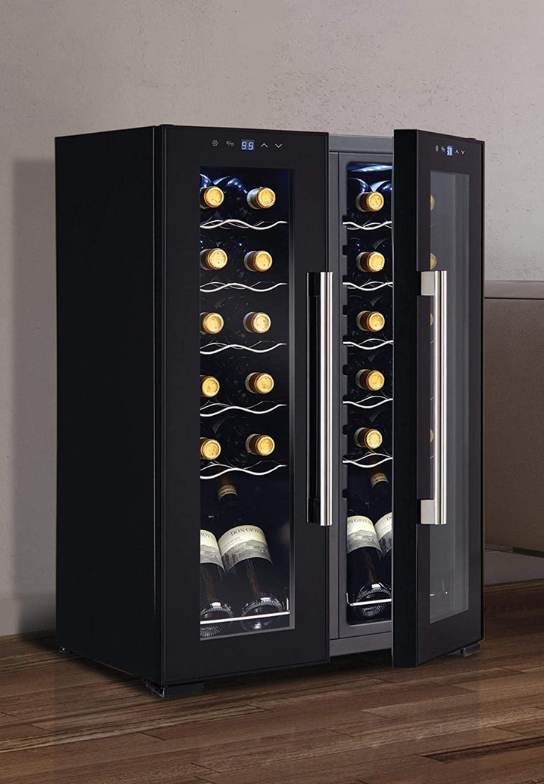
One of the main advantages of freestanding wine coolers is their ease of installation and low-maintenance nature. Simply plug the unit into a standard electrical outlet, and you're good to go.
In addition, freestanding wine coolers afford more flexibility in terms of positioning, as they can be conveniently moved between rooms or placed in a utility room to save space.
Freestanding wine coolers also come in various bottle capacities, with some models accommodating up to 200 bottles.
This allows you to store a diverse collection of wines at different temperatures, catering to the specific needs of each type of wine.
However, it's essential to provide adequate space around the back and sides of freestanding wine coolers to prevent overheating and ensure optimal airflow.
This may require some planning and rearrangement of your kitchen space existing layout, but the versatility and ease of use make freestanding wine coolers an attractive option for many wine enthusiasts.
Advantages of Built-In Wine Coolers
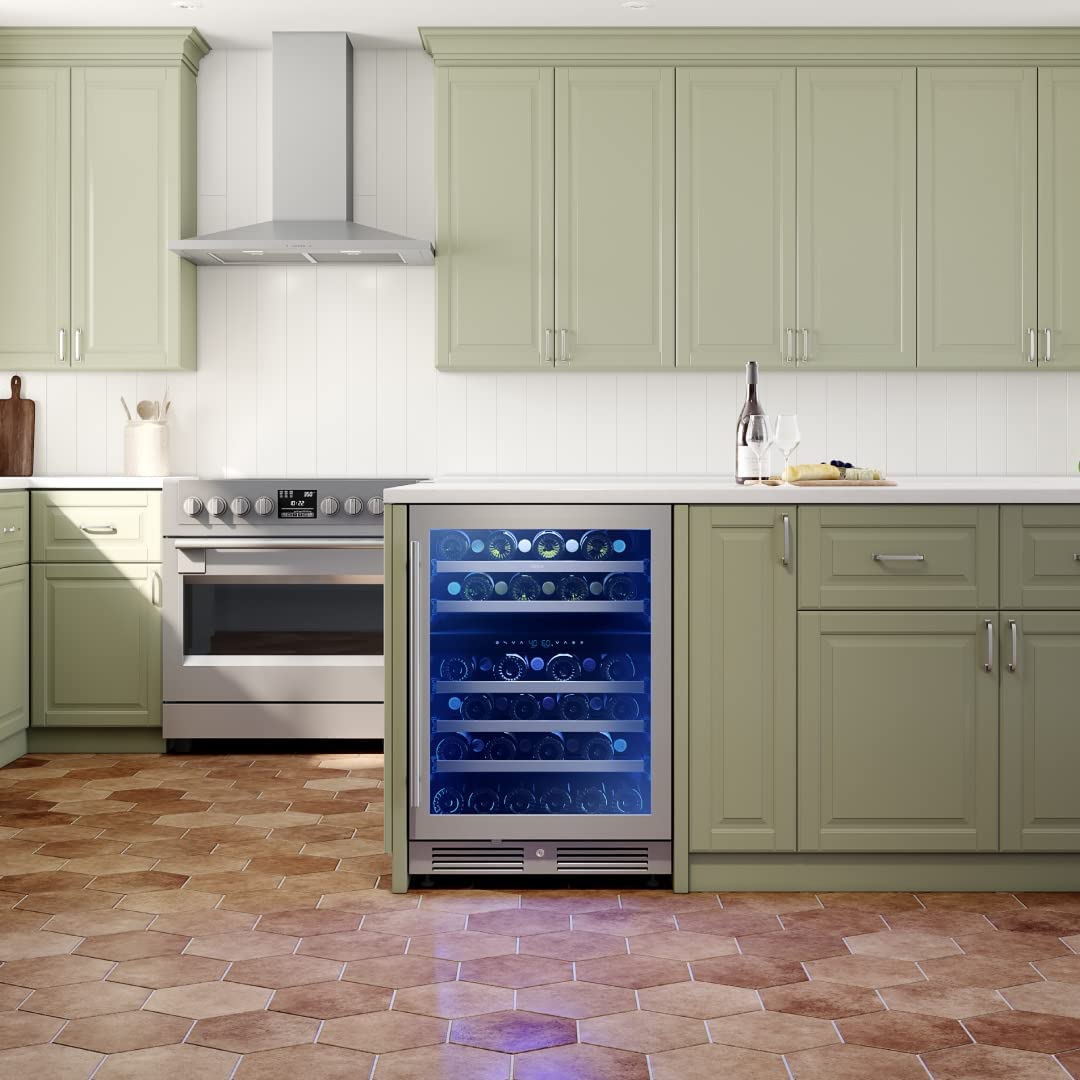
Built in Wine Cooler
Built-in or integrated wine coolers offer a more sophisticated and space-saving solution for wine storage.
Designed to fit seamlessly into any cabinet or counter, these coolers can be positioned independently and release heat from the front, making them ideal for tight spaces or for integration beneath kitchen counters.
Another key difference between built-in and freestanding wine coolers is the ventilation system.
Built-in wine coolers dissipate heat from the front, requiring only a few centimeters of clearance from surrounding cabinetry around the unit to prevent overheating and facilitate air circulation.
This makes them a more suitable option for those with limited space or a desire for a seamless integration with their existing cabinetry.
However, it's essential to keep in mind that built-in wine coolers may require professional installation or an understanding of cabinetry and electrical work, making them a more involved option compared to freestanding wine coolers.
Comparing Cooling Technologies


Glasses of red wine
When it comes to wine coolers, there are two main cooling technologies to consider: compressor and thermoelectric systems.
Compressor coolers offer greater power and can chill to lower temperatures, making them ideal for those who require a more robust cooling solution for their wine collection.
Thermoelectric wine coolers, on the other hand, utilize the Peltier Effect to transfer heat from one side of the device to another.
These coolers are known for their energy efficiency and low noise output, making them a more environmentally friendly and quiet option compared to compressor coolers.
Ultimately, the choice between compressor and thermoelectric cooling technologies will depend on your personal preferences, as well as factors such as energy consumption, noise level, and cooling power.
Both options have their merits, and it's essential to weigh the pros and cons before making a decision.
Size and Capacity Considerations
The size and capacity of built-in and freestanding wine coolers vary, with built-in models having limited depth but more flexibility in width.
When selecting a wine cooler, it's crucial to consider the available space in your home, as well as the size of your wine collection. A 12-bottle wine fridge typically has dimensions of approximately 10 x 20 x 25 inches.
Freestanding wine coolers, on the other hand, come in various sizes and capacities, with upright models typically available in widths of 24 and 28 inches, and under counter models in widths of 6, 12, 20, and 24 inches.
The capacity and shelf space of each model will depend on its size, so it's essential to select a wine cooler that can accommodate your collection without taking up too much space in your home.
Installation and Ventilation
Installing a freestanding wine cooler is a breeze, as it simply requires plugging the unit into a standard electrical outlet and switching it on.
However, installing integrated wine coolers may require professional help, as they necessitate an understanding of cabinetry and electrical work.
In terms of ventilation, built-in wine coolers dissipate heat from the front, making them suitable for seamless integration into cabinets or beneath countertops.
This also means that they require only a few centimeters or an inch of clearance around the unit to prevent overheating and ensure proper air circulation.
Freestanding wine coolers, on the other hand, dissipate heat through the rear of the unit, necessitating proper rear ventilation.
As mentioned earlier, it's essential to provide adequate space around the back and sides of freestanding wine coolers to prevent overheating and ensure optimal airflow.
Design Options and Customization
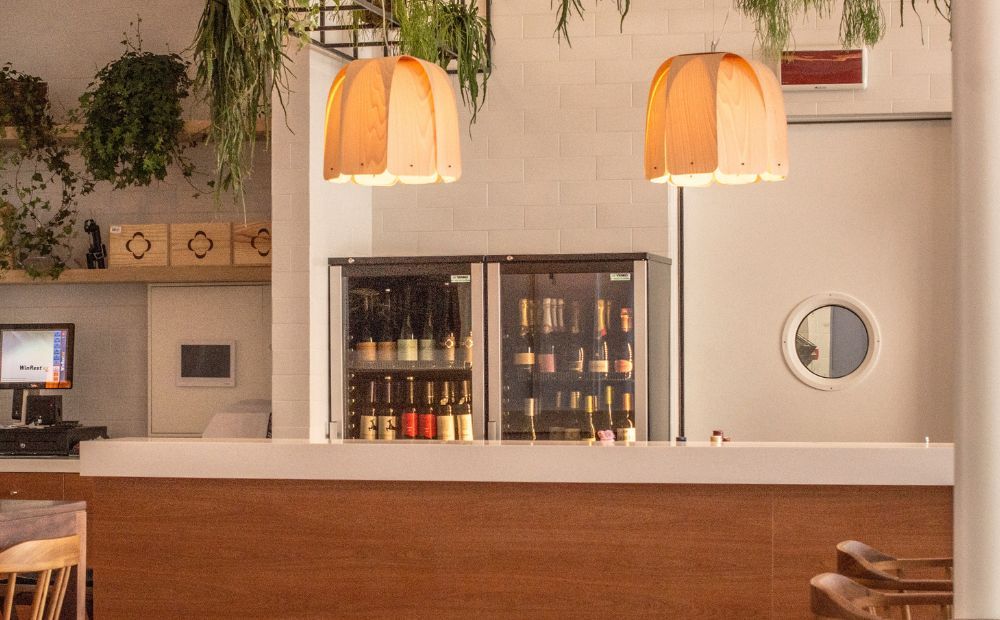
Freestanding Dual Zone Wine Fridge
Integrated wine coolers offer a wide range of design options and customization features, with various sizes, shapes, and styles available. Panel-ready options enable a seamless built-in installation, while reversible doors cater to left or right-handed opening.
Storage drawers provide extra storage space for bottles and other items, and clear or solid glass doors allow for visibility of internal shelves and the contents without having to open the door.
The primary distinction between freestanding and integrated wine coolers in terms of design is the ability of the integrated wine cooler models to blend in with existing cabinet and room styles, as they can be concealed behind a cabinet door.
This makes them a more sophisticated option for those who prioritize aesthetics and seamless integration with their home's interior design.
However, freestanding wine coolers also offer a variety of design choices, with models available in different sizes and capacities to suit various needs and preferences.
Ultimately, the choice between built-in and freestanding wine coolers will come down to your personal preference, available space, and desired features.
Choosing the Right Wine Cooler for Your Needs
Selecting the right wine cooler for your needs and preferences will depend on various factors, such as size, capacity, temperature range, type of cooling system, noise level, energy efficiency, and shelving.
Both built-in and freestanding wine coolers have their merits, and it's essential to weigh the pros and cons of each option before making a decision.
For those seeking a more sophisticated and space-saving solution, built-in wine coolers may be the best bet, as they offer seamless integration and can be positioned independently within cabinets or under counters.
Freestanding wine coolers, on the other hand, provide more versatility in terms of positioning and installation, making them a more suitable option for those with limited cabinet space or a desire for a more flexible wine storage solution.
Ultimately, the choice between built-in and freestanding wine coolers will come down to your individual requirements and preferences, as well as the available space in your home.
By considering the key differences between the two options, you can make an informed decision that best suits your needs and maximizes the enjoyment of your wine collection.
- How to Choose a Wine Fridge
Built in vs Freestanding - Danby
Summary
Both built-in and freestanding wine coolers offer unique benefits and considerations that cater to different needs and preferences.
Built-in wine coolers provide a more sophisticated and space-saving solution, ideal for seamless integration into your home's interior design, while freestanding wine coolers offer versatility in positioning and installation, making them a more flexible option for wine enthusiasts.
When choosing between the two options, take into account factors such as size, capacity, cooling technology, installation requirements, and design preferences.
Consider also the available space in your home, as well as the specific needs of your wine collection.
By weighing the pros and cons of built-in and freestanding wine coolers, you can make an informed decision that best suits your needs and enhances the enjoyment of your prized wine collection.
No matter which option you choose, proper wine storage is essential for maintaining the quality and taste of your wines, ensuring that you can enjoy each sip to the fullest.
As you embark on your journey to find the perfect wine cooler, remember that the ultimate goal is to preserve and showcase your wine collection in the best possible way.
Choose wisely, and toast to the enjoyment of your favorite wines for years to come. Cheers!
Check out our article on the best under counter wine fridge
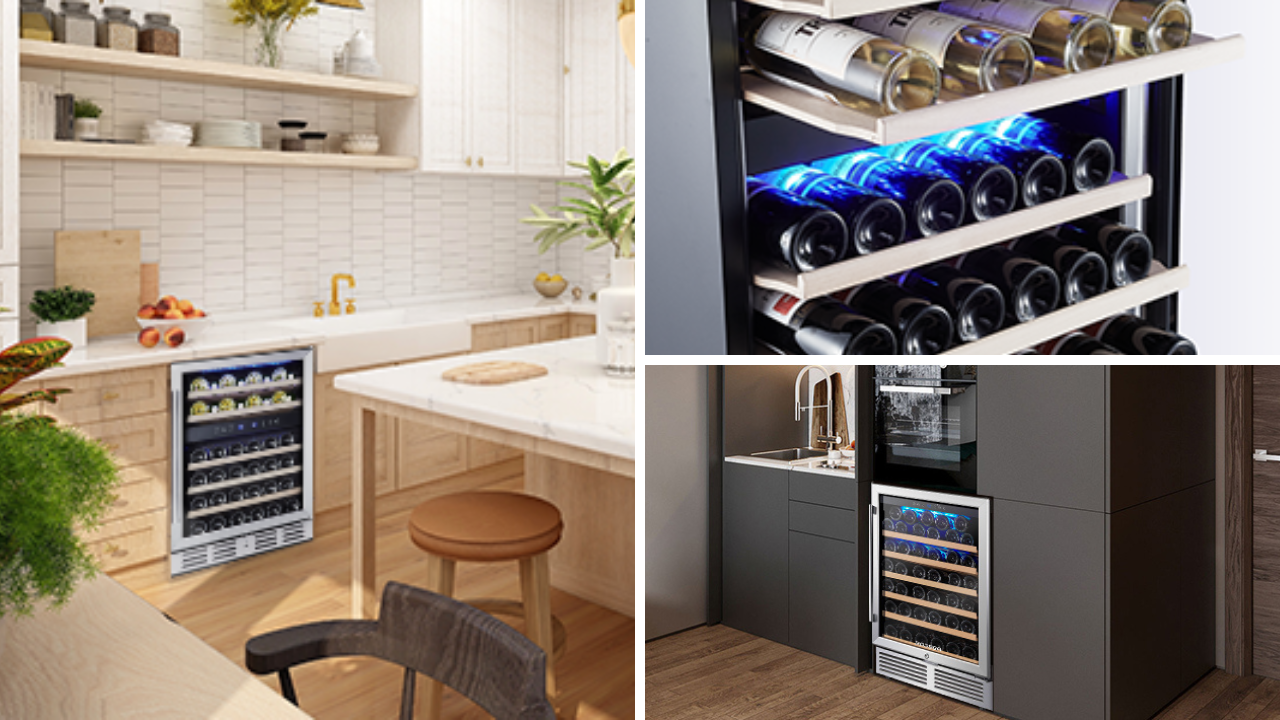
If you are looking for a smaller Wine Cooler, check out our blog post on our top picks for the Best Slim Wine Fridge.
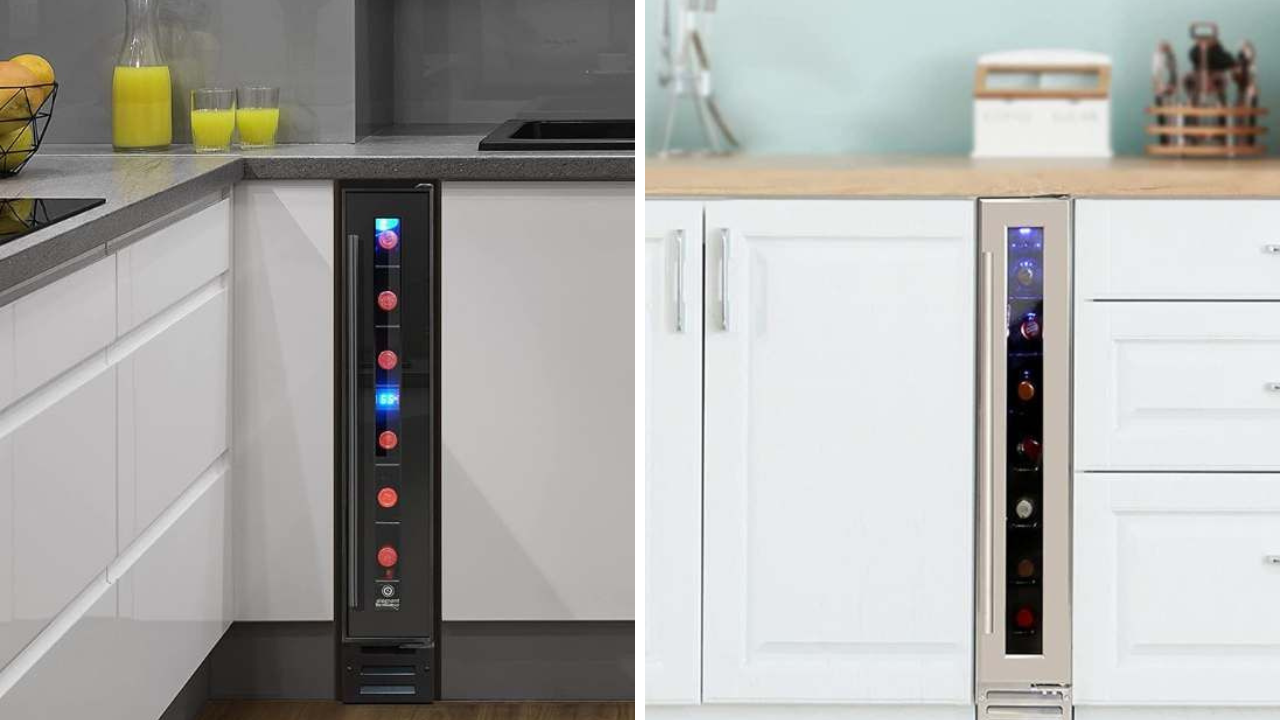
Or you might also be interested in our top picks for the Best Wine Fridge.
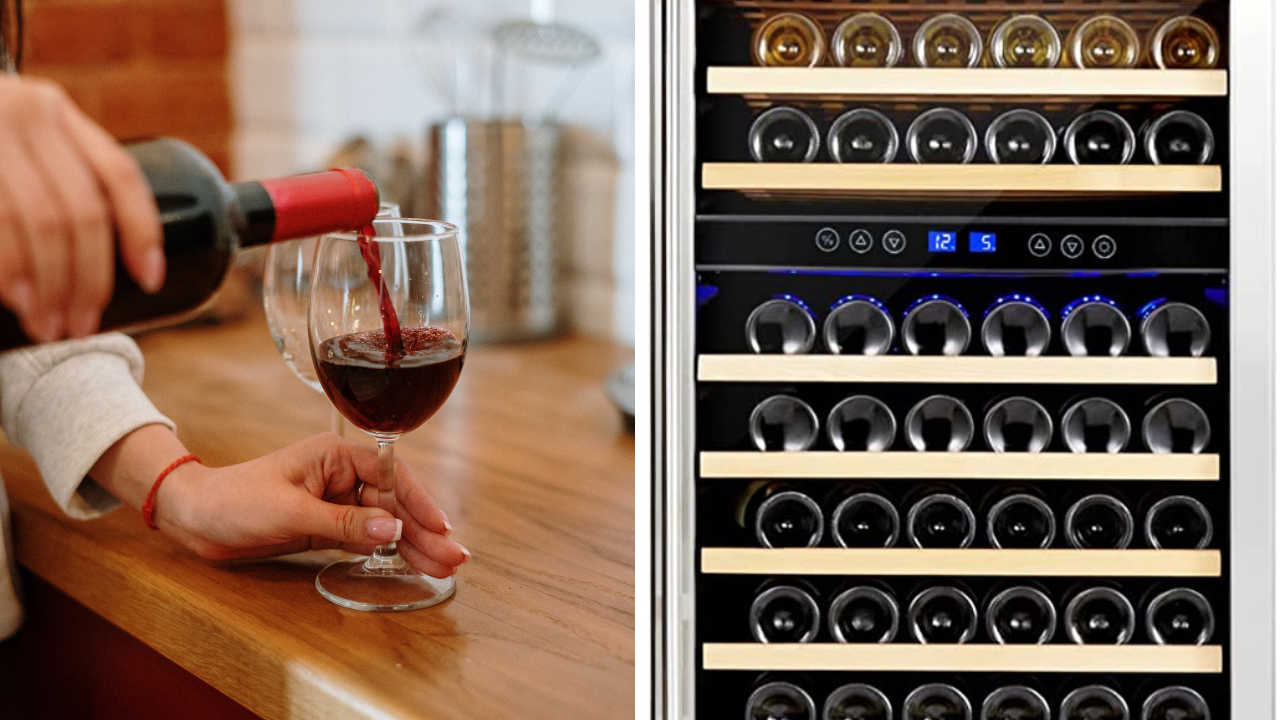
If you have a large wine collection then check out our article on the best large wine fridge.
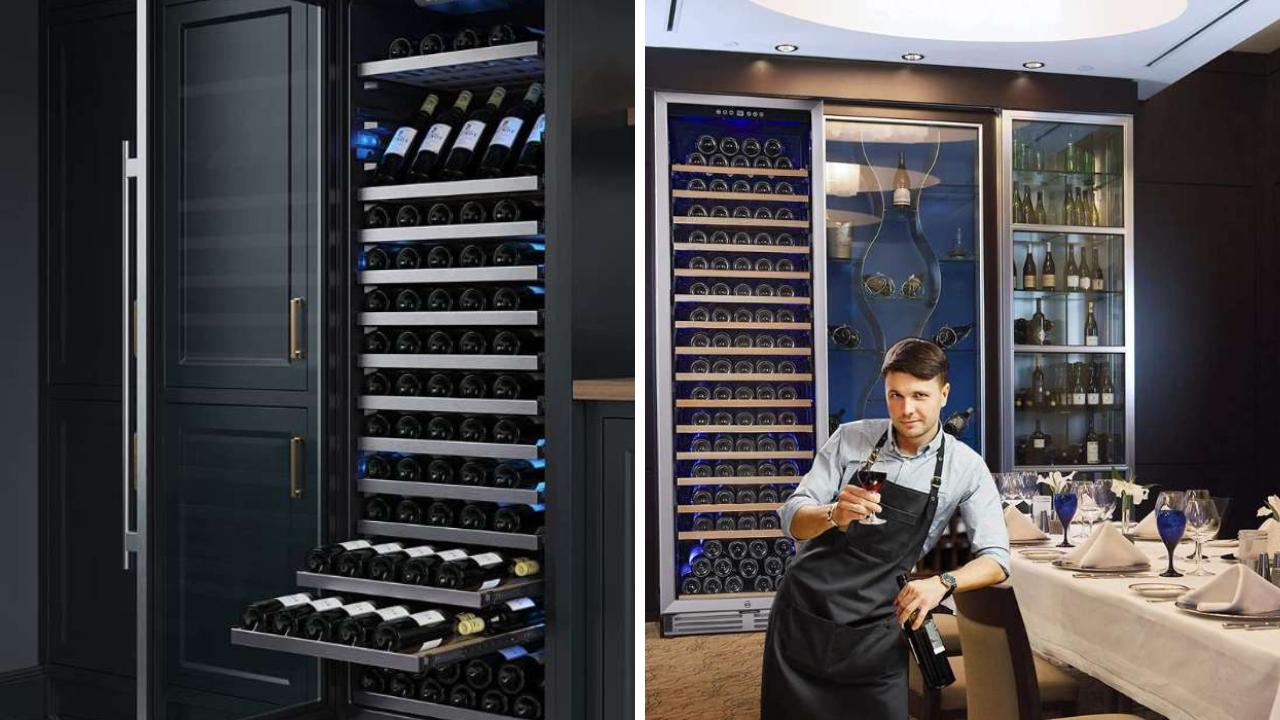
Frequently Asked Questions
Can built in wine fridge be used as freestanding?
Yes, built-in wine fridges can be used as freestanding units. Freestanding wine fridges are designed to be placed in any room in the home, and they don't need to be built into a wall or cabinet. However, it's important to note that built-in wine fridges are designed to fit into a specific space and may not fit in a freestanding configuration. Additionally, built-in wine fridges may require additional ventilation or air circulation, and so it's important to read the product
What is the difference between built in and built under wine cooler?
The main difference between a built-in and a built-under wine cooler is that the former is designed to be installed into existing cabinetry and fits within the space, whereas the latter is specifically designed to fit under a countertop or other suitable flat surface.
Does a built in wine fridge need ventilation?
It is essential to note that a built-in wine cooler must be properly ventilated in order to ensure it functions as designed. This means having adequate air flow at the front of the cooler, due to limited space on the back.










